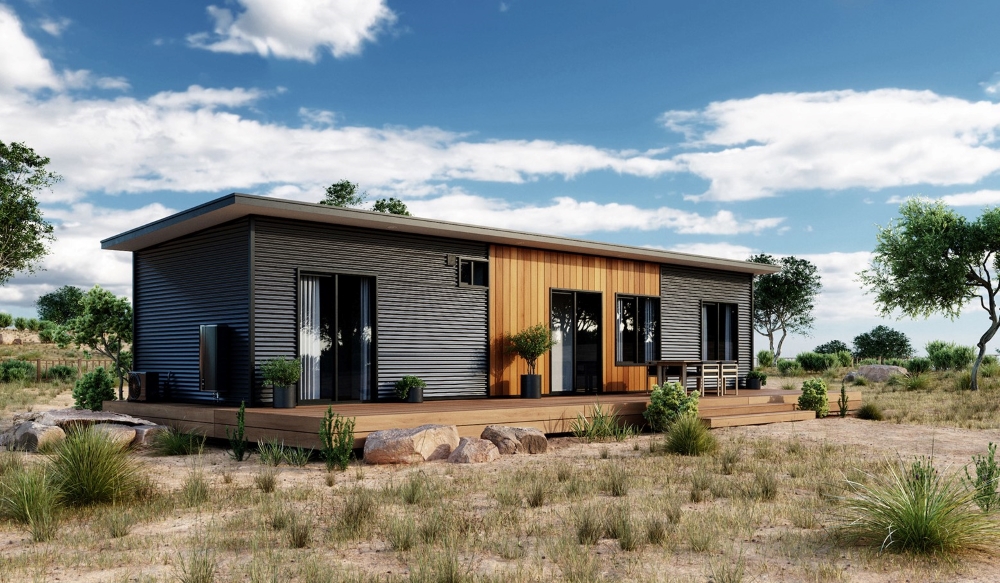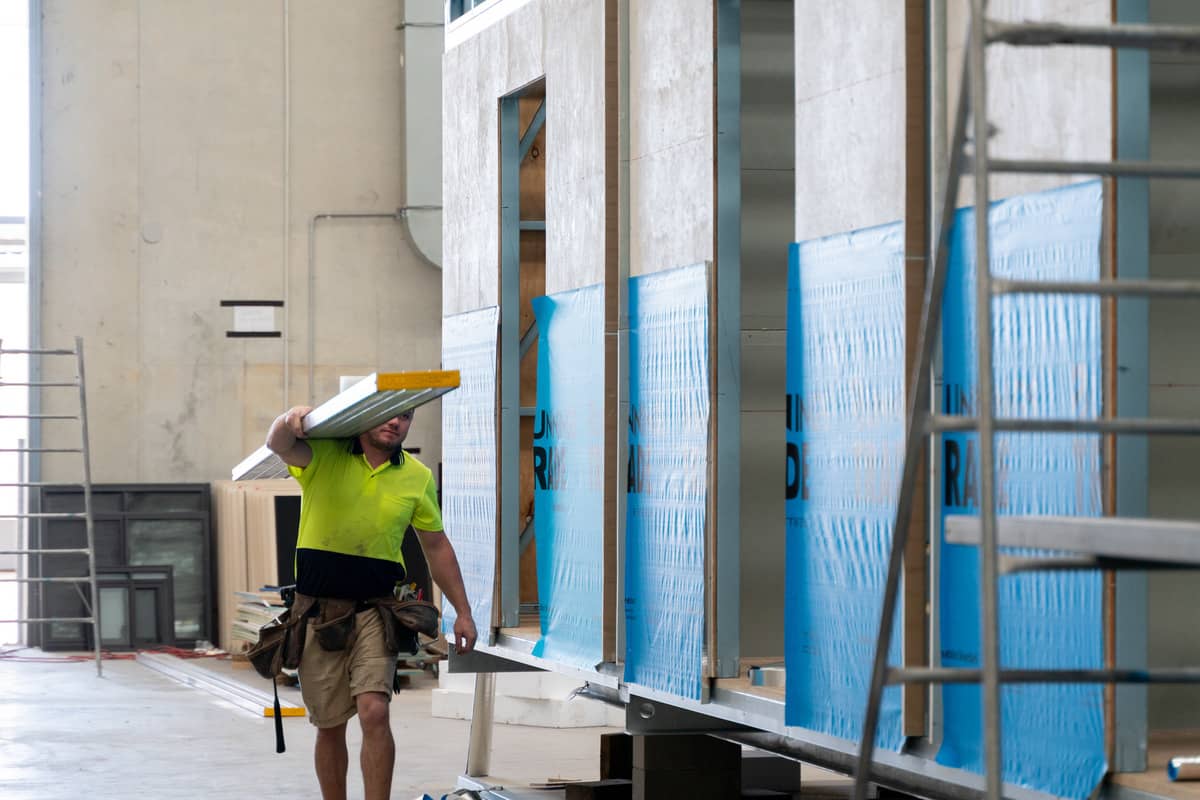| Key Summary: Portable Building vs Traditionally Constructed Buildings | |
|---|---|
| Portable buildings provide a quick, flexible, and cost-effective solution compared to traditional construction. Prefabricated off-site, they offer fast assembly, lower costs, and minimal disruption. While traditional buildings offer more customisation, portable options now feature greater design flexibility, sustainability, and easy relocation. | |
What is a Portable Building?
A portable building is a pre-fabricated structure designed for easy transportation and relocation. The bulk of the construction of portable buildings happens in an offsite factory setting and are typically assembled in sections or modules.
Key Building Characteristics:
- Prefabricated and built off-site in a controlled environment
- Adaptability is part of their appeal
- Easy to reconfigure and expand
- Can be used for various purposes such as offices, classrooms, or even living spaces
What Is Traditional Construction?
A traditionally constructed building is a permanent structure built on-site using conventional construction methods.
Key Building Characteristics
- Generally designed designed as permanent structures fixed to their foundations
- Built entirely on-site using materials like timber, brick, concerete and steel
- Process involves laying foundations, constructing walls, and completing the structure at the location
- Usually more expensive due to the longer construction time and on-site labour needed
Differences by Factor
| Aspect | Portable Buildings | Traditional Buildings |
|---|---|---|
| Construction Method | Manufactured off-site in sections, then quickly assembled at the final location. | Built entirely on-site using conventional materials like wood, brick, and steel. |
| Time to Completion | Can be completed much sooner than traditional builds due to prefabrication and modular construction methods. | Often take months or years, with delays from weather or permits. |
| Cost | More cost-effective, reducing material, labour, and time expenses. | Typically more expensive due to extended timelines and on-site costs. |
| Mobility and Flexibility | Easily relocated, offering flexibility for businesses. | Fixed in place, relocation is costly and difficult. |
| Disruption | Minimal disruption since most construction happens off-site. | Cause more disruption due to on-site construction and heavy equipment use. |
| Customisability | Once considered to have limited customisation, many manufacturers now accommodate more design possibilities. | Provide extensive design options but come with higher costs and longer timelines for changes. |
| Sustainability | More sustainable, using less energy and producing a smaller carbon footprint. | Can be sustainable but often involve more waste and energy use during construction. |
How is Each Constructed?
How are Portable Buildings Built?
Most work on your demountable structure will occur offsite at our factory. This limits the concerns of weather conditions impacting construction. We do not promise a specific timeline, but most of our structures are ready in around nine months. The steps to complete your structure are as follows,
- Design and Planning: The process starts by designing the building to match desires specifications, including size, layout, and materials.
- Manufacturing Off-Site: Building components are prefabricated in our factory. This controlled environment ensures consistent quality and reduces waste.
- Transportation: Once completed, the components are transported to the site, usually by a tilt-tray truck or specialised vehicles, depending on the building’s size.
- Site Preparation: The site is prepared by leveling the ground and laying a foundation, often using concrete blocks or gravel for drainage.
- Assembly and Finishing: The prefabricated sections are assembled on-site, secured to the foundation, and finished with insulation, electrical work, and interior fixtures, making the building ready for use.
How are Traditionally Constructed Buildings Built?
Constructing a building takes numerous steps and a significant amount of time. Depending on the building, site conditions and delays, it could take close to a year. The basic steps in commercial construction include,
- Site Preparation and Foundation: The site is cleared and excavated, followed by laying the foundation, which involves pouring concrete footings, foundation walls, or a slab.
- Framing: The building’s frame, including walls, floors, and the roof structure, is erected. Roof trusses and sheathing are then installed.
- Exterior Work: Windows and doors are installed, exterior finishes like siding, bricks, or stucco are applied, and the roofing is completed.
- Interior Work: Electrical wiring, plumbing, and HVAC systems are installed, insulation is added, and drywall and interior finishes such as painting and flooring are completed.
- Final Touches and Inspection: Fixtures and appliances are installed, landscaping is finished, and final inspections are conducted to obtain the occupancy permit.
Key Advantages of Portable Buildings Over Traditionally Constructed Buildings
Mobility and Flexibility
One of the biggest benefits of portable buildings is how easily they can be relocated. Unlike permanent structures, these buildings can be taken apart and moved to a new location without causing major disruptions. This makes them perfect for industries like retail or education that need the flexibility to adapt quickly to different spaces.
Quick Installation
Portable buildings can be put together much faster than traditional buildings. Since the components are made off-site, they’re ready to be assembled quickly. Once delivered, they can be installed in just a few days or weeks, depending on the size. This speed helps save both time and labour costs.
Cost-Effectiveness
In most cases, portable buildings are more affordable than traditional construction. Their quick setup and prefabricated nature reduce labour costs and the need for expensive materials. This makes them a smart option for small businesses, startups, or anyone needing temporary space at a lower cost.
Environmental Sustainability
Many portable buildings are designed with sustainability in mind. The controlled building process cuts down on waste, and because these buildings can be relocated, they don’t leave a lasting environmental impact. Plus, they can be made energy-efficient, potentially lowering carbon emissions and helping save on utility bills over time.
Ease of Customisation
While traditional buildings offer a high level of customisation, portable buildings still provide plenty of flexibility in their design. They can be adjusted to meet specific needs and can be modified or expanded as circumstances change.
When Is a Portable Building Better to Use Than a Traditionally Constructed Building?
While portable and traditionally built structures can be beneficial, there are situations when a portable building will best meet your needs. Some examples include,
- Time Crunch– When you need a building in a short amount of time, a portable building is your best option because they come together quickly.
- Financial Constraints– You can save a considerable amount of money when you choose a portable structure over one built in the traditional manner.
- Use of Space– Portable structures provide a number of options for your layout.
To learn more about how portable buildings can reimagine your workspace and improve your efficiency, please feel free to get in touch with the experts here at Aussie Demountables. We have years of experience helping customers find portable buildings and demountables that meet their needs at a reasonable price.


